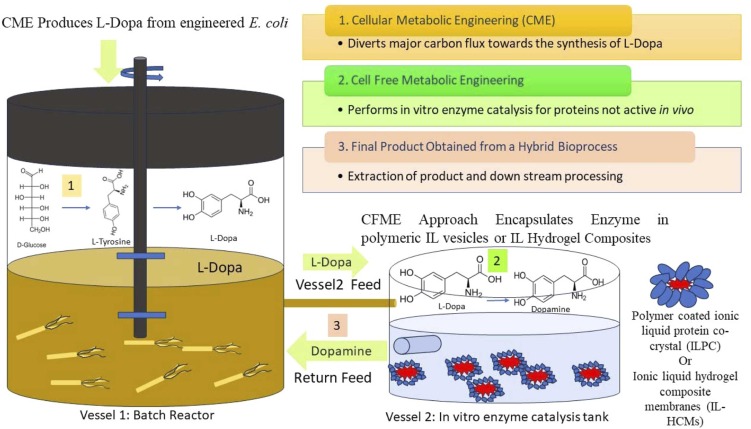
The Future of Chemical Manufacturing Could Be More Compact, Quicker, and Environmentally Friendly — Owing to Custom-Made Enzymes
A recent advancement in biotechnology has the potential to transform the chemical manufacturing sector. A joint team of researchers from UC Santa Barbara, UCSF, and the University of Pittsburgh has pioneered a novel approach to crafting custom enzymes from the ground up that surpasses many of the solutions provided by nature. Their research, published in the journal Science, signifies a pivotal shift toward more efficient, cleaner, and scalable chemical production — creating groundbreaking opportunities in pharmaceuticals, materials science, and industrial chemistry.
“If individuals could create highly efficient enzymes from scratch, many significant issues could be addressed,” remarked Professor Yang Yang, a lead author and chemistry faculty member at UCSB.
Developing Superior Catalysts From Scratch
The fundamental innovation behind this research is the ability to build “de novo” enzymes — synthetic proteins developed entirely from first principles, using amino acids as building blocks. Unlike traditional enzyme engineering that modifies existing proteins, this methodology enables scientists to concentrate on reactions for which nature’s performance is lacking or nonexistent.
Referred to as “NovoChromes,” these new enzymes introduce a radically distinct category of catalysts. They feature extraordinary attributes:
– The capacity to create carbon-carbon and carbon-silicon bonds with extreme precision
– Operational efficiency at elevated temperatures (up to 100°C)
– Outstanding resilience in extreme conditions, such as organic solvents (up to 70%)
– Quicker reaction rates than the most optimized natural enzymes
– Enhanced selectivity, all contained within compact molecular architectures
This collection of characteristics positions NovoChromes as prime candidates for next-gen chemical processes.
The Convergence of AI and Chemical Insight
How did the team achieve what nature took billions of years to refine? The design procedure commenced with a straightforward helical protein framework. Sophisticated artificial intelligence (AI) algorithms were subsequently utilized to explore sequence variations, scanning for combinations that could produce highly efficient catalytic sites.
Yet, AI had its limits. Initial designs resulted in satisfactory but mediocre enzymes. X-ray crystallography unveiled structural limitations, including a disorganized loop essential for binding and catalysis.
“In essence, while AI-driven protein design approaches are valuable, creating highly effective catalysts necessitates our proprietary algorithm and chemical insight to ensure everything is executed correctly,” Yang clarified.
After addressing these shortcomings, the enhancements were striking. A single NovoChrome variant was capable of executing 290,000 reactions in merely one hour — matching and even surpassing the efficiency of nature’s most potent enzymes.
Setting Records, Overcoming Obstacles
Through exhaustive evaluations, the team established that NovoChromes could function across a wide range of chemical substrates. One notable achievement was the synthesis of a cyclopropane framework featuring adjacent quaternary and tertiary stereocenters — a molecular arrangement notoriously difficult to synthesize yet essential in drug development.
Beyond precise catalysis, the engineered enzymes displayed flexibility. Utilizing directed evolution — a technique for selecting and amplifying more effective variants — the researchers greatly improved performance. An enzyme refined via this method reached a turnover number nearing 33,000, establishing a new standard for generating carbon-silicon bonds.
Interestingly, one of the most advantageous mutations entailed introducing proline — an amino acid commonly known to disrupt protein helices. However, in this scenario, it allowed the enzyme to better hold its reactive substrates, enhancing efficacy. This surprising result underscores the importance of experimental validation alongside computational design.
Eco-Friendly Chemistry, Customized Enzymes
Perhaps the most significant impact of this research lies in its sustainability implications. Conventional chemical methods often depend on toxic metals, caustic solvents, and significant energy usage — all of which contribute to environmental harm and production inefficiency.
In contrast, NovoChromes function effectively in water — the most eco-friendly solvent — and do so at lower temperatures with improved selectivity, thus minimizing waste. Their ability to be tailored to utilize benign cofactors can dramatically reduce the ecological footprint of numerous industrial reactions.
“If you possess a thorough understanding of the design principles, you can construct a protein catalyst to utilize any cofactors you desire and to achieve complex transformations in water,” stated Yang.
Looking Ahead: More Streamlined, Intelligent Enzymes
With successful proof-of-concept achievements, the research team is investigating further downsizing and functional expansion of these synthetic enzymes. They aspire to create even simpler proteins with comparably high catalytic efficiency and to engineer enzymes that enable reactions hitherto unknown in biology.
Such developments could revolutionize standard practices in drug design, material fabrication, and petrochemical alternatives — resulting in manufacturing that is smaller in scale, quicker in execution, and more sustainable in nature.
This research involves contributions from Kaipeng Hou, Wei Huang, Miao Qui, Thomas H. Tugwell, Turki Alturaifi, Yuda Chen, Xingjie Zhang,